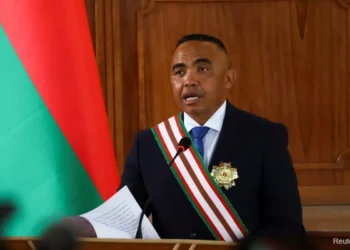Kenya’s central bank has trimmed its benchmark lending rate by 25 basis points, marking the seventh consecutive cut, in a move aimed at stimulating private sector lending and supporting economic momentum.
The Central Bank of Kenya (CBK) announced on Tuesday that the policy rate would drop from 9.75% to 9.50%. The decision aligned with the median forecast in a recent Reuters poll of economists.
In its statement, the CBK’s Monetary Policy Committee (MPC) said, “The Committee … concluded that there was scope for a further easing of the monetary policy stance to augment the previous policy actions aimed at stimulating lending by banks to the private sector.”
Consumer inflation edged up to 4.1% year-on-year in July from 3.8% in June, but the rate remains comfortably within the CBK’s 2.5% to 7.5% target range. While inflationary pressures appear contained, the East African nation’s fiscal health remains under strain due to heavy debt repayments and lower-than-expected revenue collection.
The CBK maintained its economic growth projections at 5.2% for 2025 and 5.4% for 2026. It also kept its current account deficit forecast at 1.5% of GDP for this year, compared to 1.3% last year.
Kenya’s economy grew by 4.5% in the first half of 2025 and is projected to rise to about 5.0% in the medium term. The services sector remains the dominant force, contributing over half of GDP, with agriculture accounting for roughly 22.5% and industry 16.5%.
Agriculture, which employs over 40% of the workforce, continues to supply key exports such as tea, coffee, horticultural products, and nuts. Despite global market volatility, productivity has held firm, supported by the government’s Bottom-Up Economic Transformation Agenda (BETA). This programme focuses on five core areas: agriculture, health, affordable housing, micro and small enterprises, and digital innovation.
The services sector is also thriving, led by finance, insurance, transport, and ICT. Nairobi’s growing reputation as a technology hub has been strengthened by advances in fintech and digital platforms that promote financial inclusion. Infrastructure and urbanisation trends point toward long-term industrial expansion, though real estate and construction have slowed in recent quarters.
Fiscal Strain Shadows Growth Prospects
Despite the positive growth trajectory, Kenya faces significant fiscal challenges. Public debt consumes more than two-thirds of government revenue, limiting room for development spending. Inflation has eased to about 4.5%, aided by lower food prices, yet external economic shocks, elevated borrowing costs, and reduced public expenditure following protests and budget cuts have slowed the recovery pace.
Poverty and unemployment, especially among the youth, remain persistent problems. Structural reforms aimed at job creation, income equality, and expanding opportunities for small enterprises are viewed as essential to sustaining growth.
Kenya benefits from strong remittance inflows, a rebound in agricultural exports, and major progress in renewable energy. Almost 90% of the nation’s electricity now comes from geothermal, hydro, wind, and solar sources. This green energy dominance has helped position Kenya as one of Africa’s top destinations for cleantech and venture capital investment.
Looking forward, the country’s growth prospects hinge on fiscal consolidation, macroeconomic stability, climate resilience, and inclusive policies that turn macro-level gains into tangible improvements in living standards.
While the recovery is underway, risks remain from unpredictable global economic trends and domestic budgetary pressures. Economists say sustained reforms and investment will be needed if Kenya is to fully realise its Vision 2030 goal of becoming a prosperous and globally competitive nation.
READ ALSO: Foreign Ministers Of 25 Countries Call For Aid Entry Into Gaza























